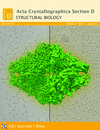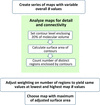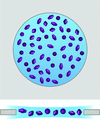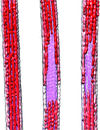issue contents
June 2018 issue
Proceedings of the third CCP-EM Spring Symposium
Edited by Tom Burnley, Paula da Fonseca and Randy Read

Cover illustration: Cryo-EM can now be used to obtain high-resolution structural information on a diverse range of biological specimens. However, for many single particle cryo-EM projects, a major bottleneck remains at the sample preparation stage, where issues such as specimen aggregation, preferred orientation and affinity for the support film prevent the collection of high quality cryo-EM data (see Drulyte et al., p. 560, for details). This cover image highlights the effects of the sample displaying a preferred orientation (right) which results in an under-sampling of some Fourier components and the reduction of overall resolution within the final reconstruction, compared with a more evenly orientated specimen (left) producing a final reconstruction with higher resolution.
introduction
 access
accessresearch papers
 access
access access
access access
access access
access access
access access
access access
access access
access

 journal menu
journal menu

























